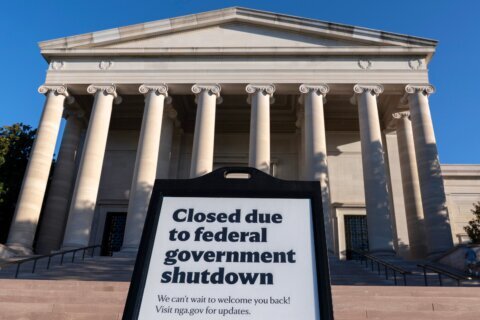A decade ago, there were less than 100 measles cases a year. Now, just about six months into 2019, the Centers for Disease Control and Prevention report there are 971. That’s the highest tally since 1992, when there were 963 cases … for the entire year.
Adding insult to infection, the disease had been declared eliminated in 2000 by health authorities.
But now, it’s back, and the outbreak continues to grow.
Dr. Anthony Fauci, director of the National Institute for Allergies and Infectious Diseases, tells WTOP the reason for that is simple: The percentage of people getting their kids vaccinated has gone down — particularly in outbreak areas — which leaves everyone else, and everyone else’s children, vulnerable.
“This is, unfortunately, entirely predictable and entirely preventable,” Fauci said.
“We’re seeing this mostly — the big outbreak — in New York City, in the Williamsburg section of Brooklyn, and a little bit farther north in Rockland County, where there may be almost 600-plus of the 971 cases … coming from that area because of a very low vaccination rate in that group.”
Number of measles cases reported by year
2010-2019**(as of May 24, 2019)
**Cases as of May 24, 2019. Case count is preliminary and subject to change. Data are updated every Monday. (Charts and data courtesy of the CDC)
The measles virus is ferociously contagious. It lives in the mucus of a person’s nose and throat, and can be spread through coughing and sneezing. It can also survive in the air for two hours.
It’s so contagious that the CDC says if just one person in a room has it, 90% of those near that person will be infected if they’re not immune.
Those who are most vulnerable are babies too young to get vaccinated.
“That’s the problem. … You generally get children vaccinated between 12 and 15 months for the first shot, and then the second shot at 4 to 6 years,” Fauci told WTOP.
“When you are in a very vulnerable area — either traveling internationally or living in one of the outbreak areas — you can vaccinate the child as early as 6 months to 11 to 12 months. But you only do that if you’re in an area where there is an outbreak.”
Before that, though, children remain at risk.
“That’s why it’s so disturbing to us in public health, where we see” less importance put on vaccines, Fauci explained. “Which is really gauged not only to protect the individuals, but also to protect the vulnerables, like the children who cannot yet get vaccinated because of their age.”
Adults can also simply go and get a vaccine, even if you’ve been vaccinated before.
“In general, you try to figure out if you were vaccinated with the full component. If you have not and you’re concerned about it, there’s no harm in getting another shot,” Fauci said.
States with reported measles cases
2019 ** (as of May 24, 2019)
(Map and data courtesy of the CDC)
There’s also the option of getting a blood test to see if you have measles antibodies, though it’s not as convenient, so Fauci said most people just get the vaccine anyway.
“Which is really very safe, despite the misinformation that … it causes adverse effects. Which it does not,” Fuaci said.
In most people, measles causes fever, runny nose, cough and a rash all over the body. However, a very small fraction of those infected can suffer complications such as pneumonia and a dangerous swelling of the brain. According to the CDC, for every 1,000 children who get measles, one or two will die from it. No deaths have been reported this year.
Measles in the U.S.
The worst year for measles in modern U.S. history was 1958, with more than 763,000 reported cases and 552 deaths. The numbers fell dramatically after a vaccine became available in the 1960s, and by the 1983, the annual case count dipped below 1,500.
But the illness rebounded at the end of the 1980s, with many cases among young unvaccinated black and Hispanic children living in inner-city areas.
In 1990, more than 27,000 cases were reported, including about 90 deaths.
During the resurgence, public health officials began recommending children get two vaccine doses, instead of one. Cases began to drop, and they plummeted after the 1993 creation of a federal program providing vaccines to children whose parents or guardians can’t afford them.
Will this year’s measles cases reach the levels seen in the early 1990s? There are several reasons the answer may be no.
Overall, vaccination levels are higher nationally today.
Also, measles cases historically peak in the spring for some unknown reason, and summer is almost here. Maybe that pattern will hold this year, too, said Dr. Peter Hotez, an infectious diseases expert at the Baylor College of Medicine.
But experts have been surprised by the current epidemic, and say some recent developments make it hard to predict.
Some point to a social media-driven anti-vaccine movement that has been a major factor in the Brooklyn outbreak.
Also, the chance of measles coming in from other countries keeps rising. The World Health Organization has said 82,500 measles cases were reported last year, over three times more than the previous year.
The CDC’s Dr. Tom Clark said that even if the New York City outbreak continues, this year’s case count should stop short of the 1992 mark.
Hotez sounded uneasy.
“How this all shakes out over the next few months, we don’t know,” he said.








